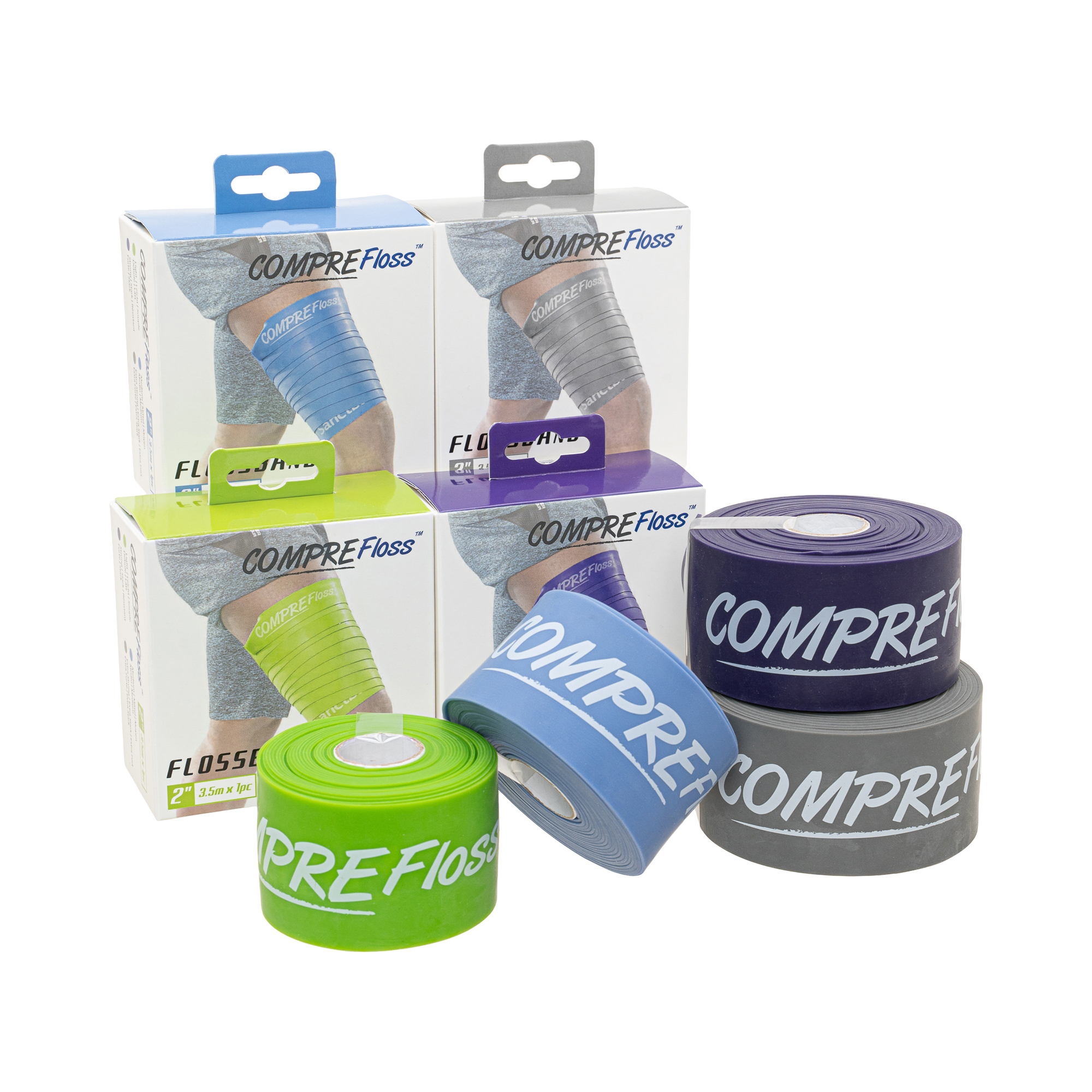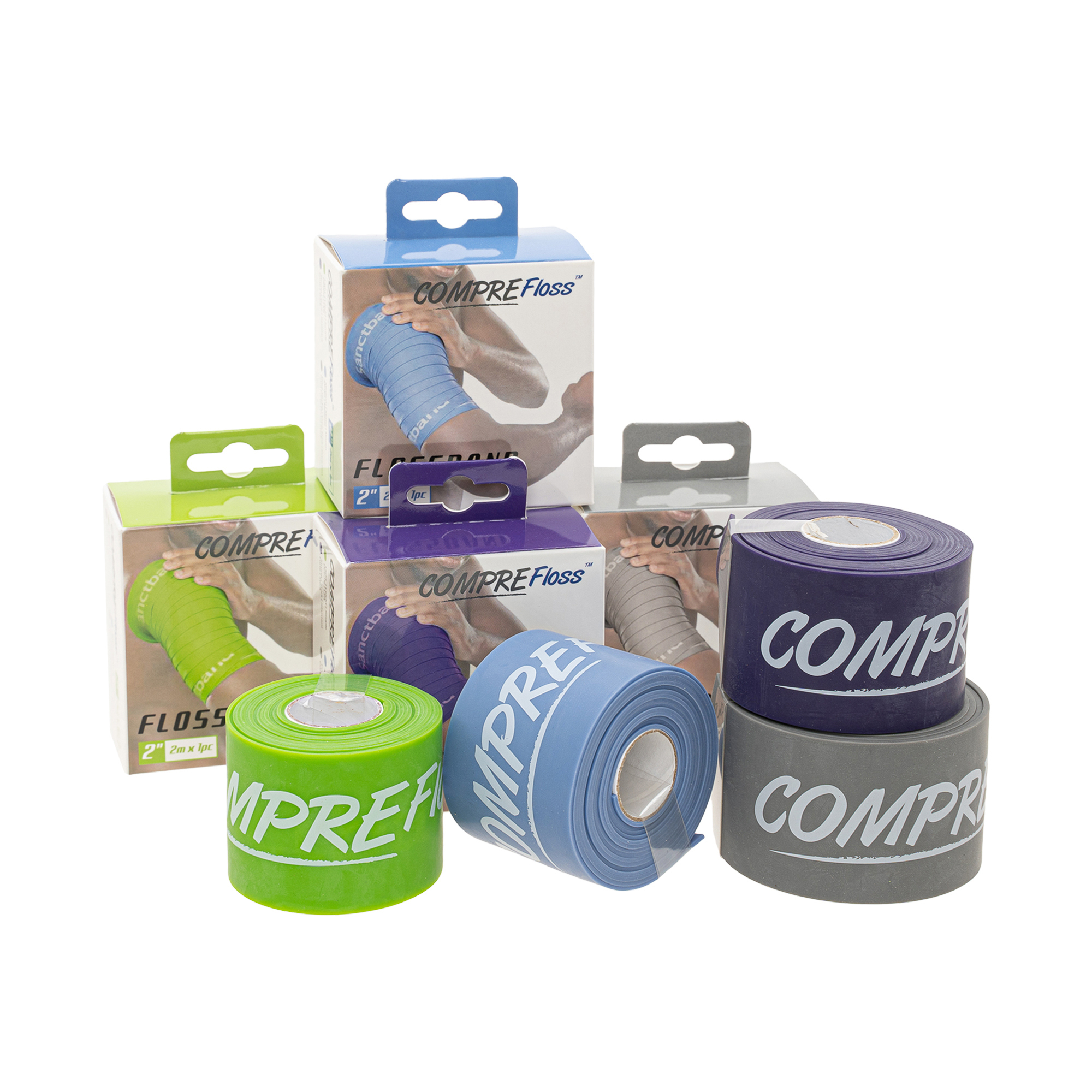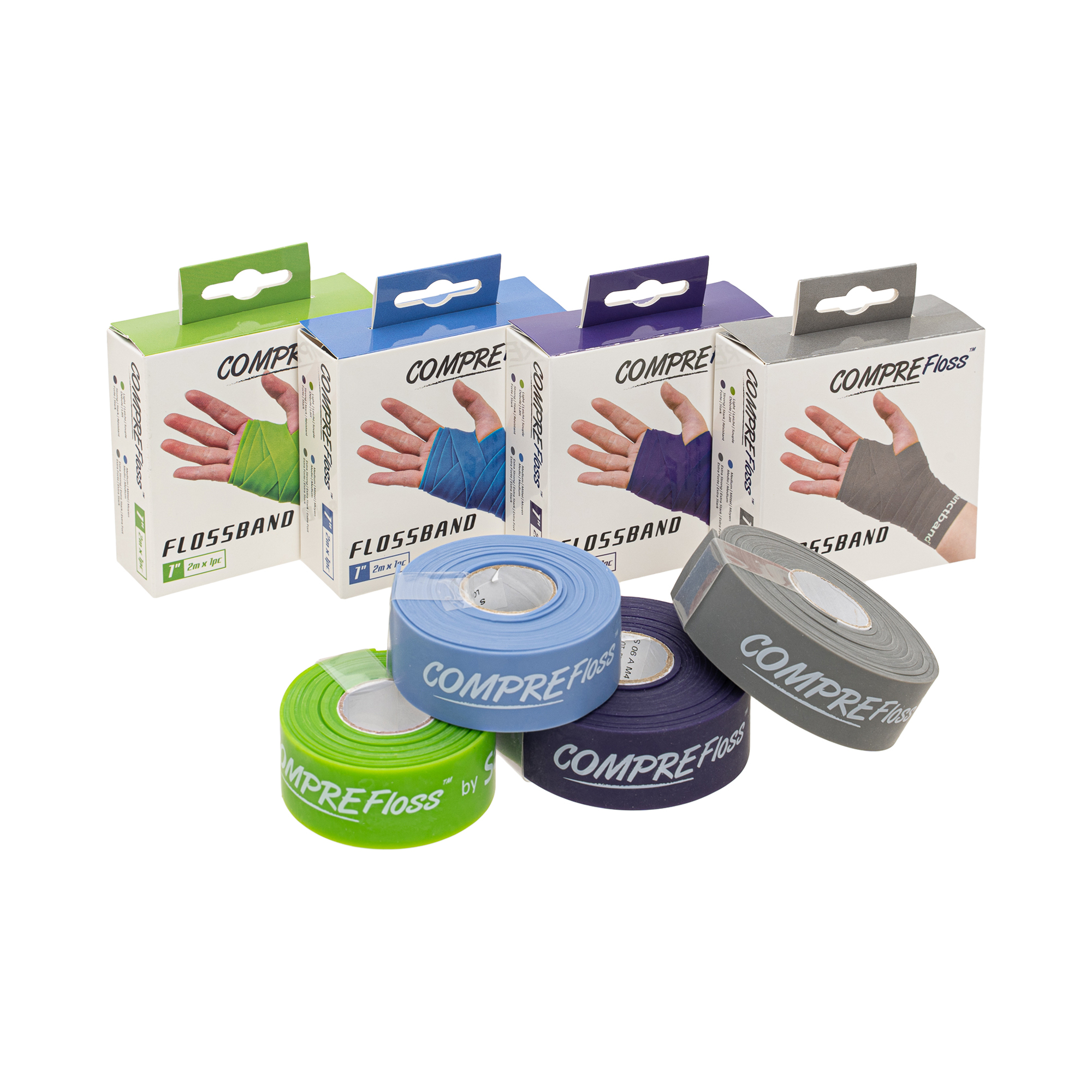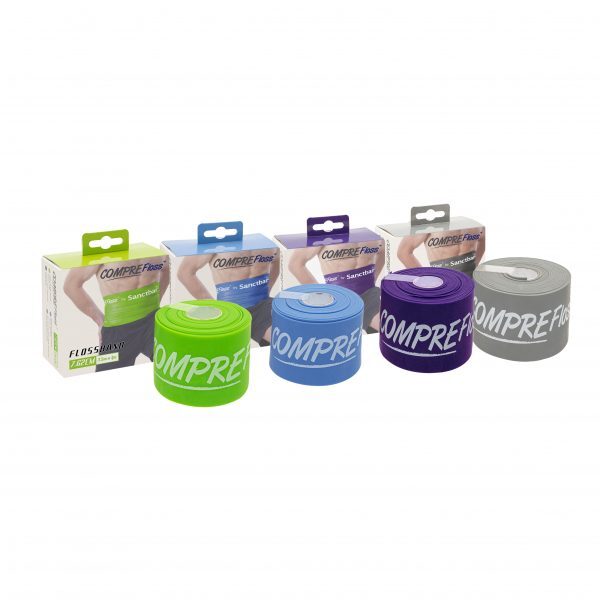CompreFloss Flossband
The flossband is used for muscle or tissue flossing – a compression therapy technique with passive or active mobilisation

The CompreFloss Flossband is a versatile performance and conditioning tool designed for muscle and tissue flossing -a compression therapy technique used with passive or active mobilisation. It is commonly applied before or after sporting activities and is increasingly integrated into physiotherapy treatment protocols.
Benefits of Muscle Flossing:
Increases muscle strength
Enhances range of motion (ROM) in joints
Improves flexibility and mobility
Restores connective tissue function
Boosts muscle contraction efficiency
Enhances blood flow
How to choose your Comprefloss
A few key factors to take note when picking out your Comprefloss:
Thickness of flossband will play a role in addition to stretch force range (50% to 90% of the length of the band) in providing the tension for an effective tissue flossing.
Width of flossband to accommodate different part of bodies. The wider flossband offers twice coverage with same consistent suitable for knees or large joints instead of conventional wrapping of using 2 or more bands.
Guide for Comprefloss care – The usual pull of flossband (50 – 75%) to produce the compression force. The frequency of usage will cause a wearing effect on the flossband hence affecting the pulling force (determinant of compression effect).
Therefore, it would be recommended to change your flossband upon 6 – 9 months for active users.
How does flossing work?
Through various application possibilities, compression is exerted on the muscles by the band. The high fixation pressure enables an inhibitory effect on the pain receptors and underlying fascia and thus loosens up the adhesions and weak links.
This takes place under active and passive movement of the extremity on which the band is wrapped. When the floss band is released, the fluid or blood stasis (“traffic jam”) is terminated and fresh blood hydrates the tissue (so-called sponge technique). This leads to the relief of different types of pain.
Why Four Strength Levels?
Tailored compression for joints and muscles
Specific pressure application on pain receptors and fascia
Suitable for both preventative and acute treatments
Supports joint structure, fascia, and sensory receptors




